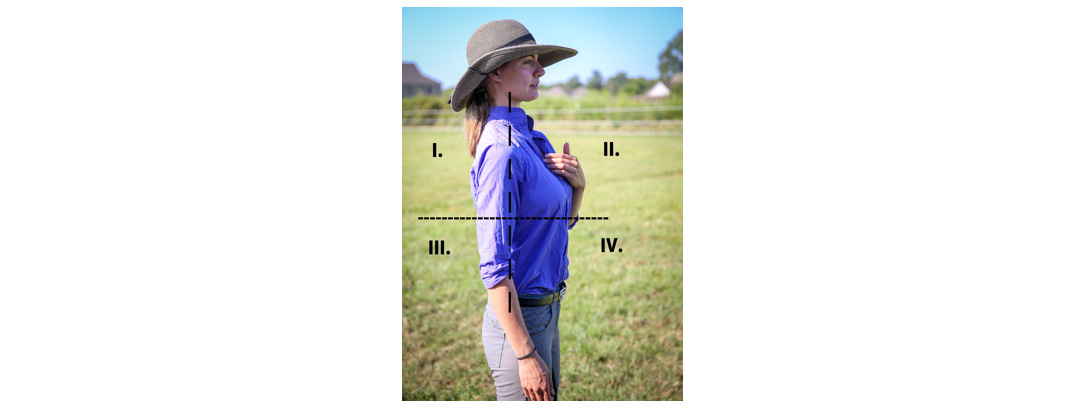Find Your Body, Find Your Horse
by Shelbie Fredenhagen

proprioception pro·pri·o·cep·tion (prō’prē-ō-sěp’shən) n. The unconscious perception of movement and spatial orientation arising from stimuli within the body itself. The American Heritage® Stedman’s Medical Dictionary
Riding demands that we tie our awareness into our horse and ourselves. Riding is all about expanding our proprioception—not only within ourselves, but for the whole horse as well. There are many ways to “plug in” to your horse. Here are two exercises to try next time you ride.
1. Connect your hips to your horse’s feet.
Can you feel each hoof underneath the horse? Do you know if the right hind foot is on the ground, or in its travel phase? A fixed foot cannot move. Knowing which leg is in movement can influence your horse and is a big part of being an effective rider with good timing.

Let’s discuss how to connect with what the hind legs are doing. First, start with someone on the ground telling you when your horse’s inside hind leg is just about to hit the ground. What is your inside hip doing at the same time? If you allow yourself to move with the natural figure 8 motion of the back, it should feel like your inside seat bone is dropping a bit to the inside with this swing phase. Since the belly is making room for their hind leg to come forward, the barrel swings to the outside. Your hips should feel like they are dropping slightly to the right, and left each step.
After you get a good idea of the timing, call out when you think you feel the inside hind leg in its swing phase. You will also feel your legs swinging in time with the barrel.
2. Divide your body into four quadrants.
This breathing exercise can help to ground you closer to the horse and lower your center of gravity. You can start from the ground, and remember to keep a bend in the knees. Imagine a plumb line down your side from your ear down, and another line horizontally through your stomach. By sectioning your torso out like this, you can have an easier time feeling where your body is in space, on top of your horse.
Start with quadrant II, your sternum. Gently place your fingers onto the middle of your sternum, and “expand” into your fingers. Open up your shoulders and feel like you can take a deep breath forward. Don’t worry about any other quadrant while you are putting your focus into another.
Then go to the opposite quadrant, III, and place your fingers just above your pelvis, on your vertebrae. Feel like your lumbar is expanding into your fingers. It might feel like you are rolling your hips under, which is fine. This is about gaining movement, and if you have the tendency to hollow your back, this can be a useful movement to find a middle ground between concaving and convexing your spine.

Practice the same in quadrants I and IV, expanding toward your hand. Feel how this changes the position of your seat bones and which quadrant is more mobile; do you feel a section missing? Go through them repeatedly until you are feeling more centered and grounded in the saddle. When it starts to feel easier, try it in the walk.
As with any movement, remember to go slowly and mindfully. A good way to check in with what you are feeling, and what is really happening in your body, is to either do these exercises in front of a mirror or have someone video you. Even a picture can help you better connect what is in your mind. It can be quite different than what our body is actually doing!
Originally Published December 2017 Issue
Shelbie Fredenhagen is a classical equitation trainer originally from Anchorage, Alaska. Now based in Alachua, Florida, Shelbie offers lessons, clinics and training opportunities for all levels with a focus on preserving the health of both horse and rider. She frequently returns to the Pacific Northwest to teach. More information can be found at http://www.bodhiequus.com/

